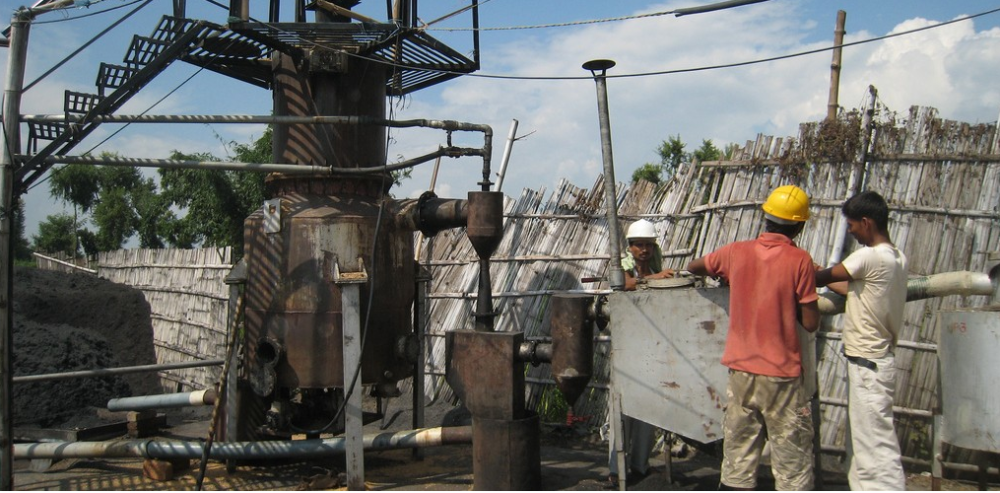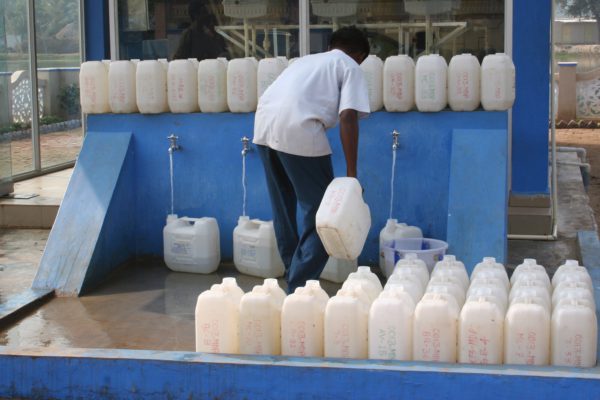
Economics through the eyes of a financial investor revolves around return on investment, a measure of how much value the investor can capture and extract. Let’s imagine a metric, perhaps hard to measure but easy to conceptualize: the total surplus, as captured by all stakeholders in an endeavor. This could be expressed as a percentage annual return on the total investment made, including both the capital invested directly in the enterprise as well as investments made by other stakeholders. We’ll call this this “integrated return on investment,” or IROI. Looking at the world through the lens of integrated return on investment reveals a great deal about how economic progress happens, and how it happens differently in economies at distinct stages of development.
As an example, let’s say an entrepreneur opens up an excellent new coffee shop in your neighborhood. The IROI in this case would include the entrepreneur’s own ROI, plus any “consumer surplus” the venture generates (e.g., if a regular customer would pay $5 for the superb latte for which the coffee shop charges $3.75, that’s a consumer surplus of $1.25), plus any surplus realized by the workers in the shop (e.g., if the barista’s next-best employment alternative was one dollar per hour less valuable to them, accounting for both the economic and the intangible benefits), plus some net spillover surplus for other businesses (e.g., the return to their suppliers, minus any negative impacts on competitors and their suppliers, and so on), plus or minus any externalities. In calculating the IROI, one would look at the capital invested, but also any other investments, such as the sweat equity of the founder. If the traditional ROI on the actual capital invested for the venture was 20%, maybe the IROI would be a higher number like 40%, mostly driven by the consumer surplus of the most ecstatic customers.
IROIs and traditional ROIs may be similar in some cases, especially where markets are competitive and externalities are low. But they can also differ wildly. A quick-buck artist might defraud customers and wreak other havoc, and have a deeply negative IROI despite a very high financial ROI. The first vibrant restaurant in a marginal neighborhood might create a very high IROI, not just because of its grateful customers, but also because of the role that it plays in a chain of events that lead to higher real estate values. The restaurant’s role in this process might generate a lot of value in the community, while the venture itself might be only barely viable from the standpoint of traditional ROI.
With this concept in mind, imagine that all the investment opportunities in the world – whoever the investor might be: private enterprises, individuals, non-profits, governments – could be ranked in terms of the expected value of their IROI, on the one hand, and their risk level on the other. Venture capital backed technology firms would have high expected IROIs – looking not just at the high expected financial return of VC portfolios, but also the wealth created for others (founders, employees), the customer surplus generated by the technology (think about how much people would pay not to have to give up Facebook!), and second-degree customer surplus generated by other organizations, existing and new, for whom valuable new possibilities open up through innovative technology. These investments, however, have very high risk. Any given investment has a low probability of success; many will turn out to be worthless. Venture capital is fundamentally a portfolio game. On the other hand, think about the opening of a new dermatology office on Park Avenue or a new car dispatch office in Queens. Those kinds of ventures generate a much more certain, but much lower level of IROI, higher than their financial ROI, but not by leaps and bounds, given that similar alternatives already abound.
Contemplating this conceptual landscape of IROI and risk, an important and perhaps somewhat surprising feature leaps out. There exist large numbers of investment opportunities in the world that have incredibly high IROIs and relatively low levels of risk.
Consider a farmer installing well-designed irrigation technologies for the first time. The farmer’s financial ROI is likely extremely high – perhaps above 100% per year. The company that supplied him with the technology gains a smaller, but real profit. In addition, the farmer realizes additional benefits. His increased income allows him to make the kind of high-yield investments that he has never been able to make before, like paying off money that has been borrowed at usurious rates, or addressing health issues that sap his productivity, or educating his children in ways that dramatically increase their likely lifetime earnings. All of these investments have very little unpredictability associated with them.
Investment in a new biomass converter power plant in a rural community in India, such those built by Husk Power Systems, might have an even higher IROI, given the huge positive externalities that electrification unlocks, and also very little uncertainty. And providing cataract surgery to individuals who would not otherwise have access to such surgery, as Aravind does, has a toweringly high IROI. There’s an initial investment of $20 to find the patient and deliver the surgery, and the patient “invests” several dollars more through lost wages, travel and so on. This investment unlocks the opportunity for the individual to return to productivity for years to come… all with near certainty about the relevant outcomes.
Looking at the world through this lens makes a very simple pattern clear. While individual investors create wealth through investment in opportunities that generate high return on investment, the world gets better off through resources getting invested in opportunities that have high IROI.



